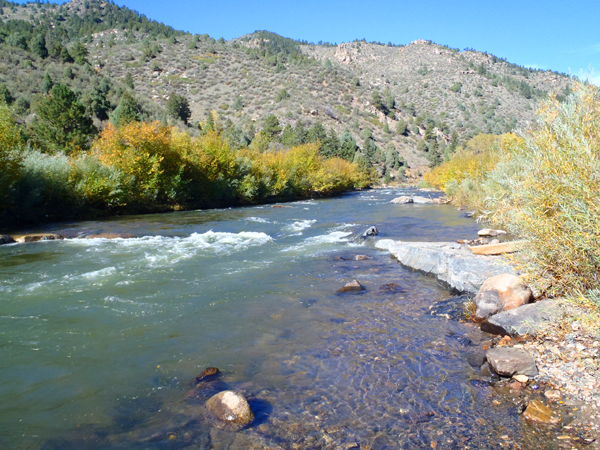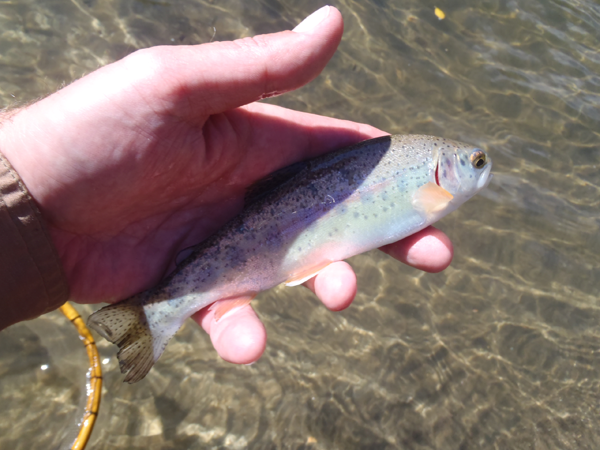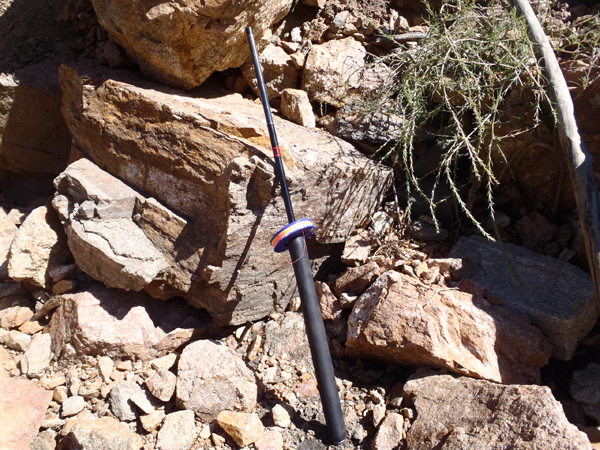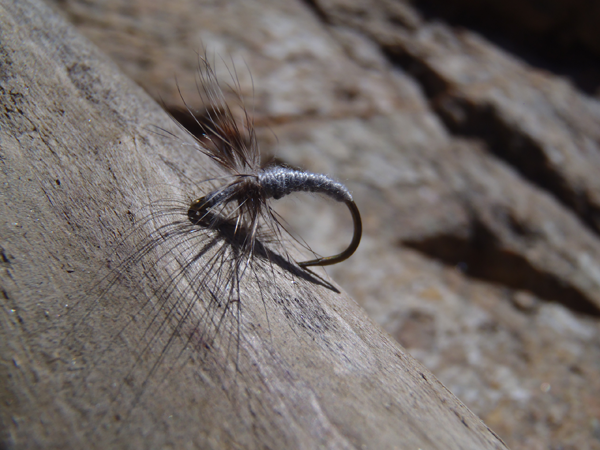I took the day off from work today to hit Clear Creek thinking the water levels might have come down a little since I was there last weekend. Nope. Still running high, but fishable. I also wanted to check out what condition the recent flooding had left the stream in. Unfortunately, two of my suspicions might have been confirmed.
When I first saw pictures and videos of the flood, I had two concerns:
1. Would there be a large fish kill?
2. Would the floods wash out the insect life?
The good news was that there were plenty of fish still around. But what I found strange was that both days I fished the creek, I was only catching really small fish. On any give day, I usually catch 9″-10″ fish on average. But post flood, I was only catching 4″-6″ fish. Not even one above 6″.
Could the flood have have somehow killed off the creek’s average-sized fish? I have no idea. I’m just reporting my observations. I would love to hear more about the effect of flooding on fish populations from a fisheries biologist to see if there will be any long-term consequences.
Today, I also caught a rainbow trout. This was unusual for me as I mostly catch browns on Clear Creek. Like all the brown trout I caught today and last weekend, this rainbow was also smaller than average.
But it was #2 that concerned me the most. Clear Creek has (or had) a very healthy aquatic insect population. Today, nearly every rock I turned over was barren. There were no mayfly nymphs to speak of and I could only find a few case caddis–the kind that secure themselves to the undersides of rocks as stubbornly as the people who defy evacuation orders during a hurricane.
Was the insect population washed out? It sure looked that way. I’m not an aquatic entomologist so I can’t say for sure. But the lack of insect life under rock after rock was pretty depressing.
It wasn’t all doom and gloom though. I still caught plenty of fish today. But it just wasn’t my usual “Clear Creek experience”. Things were noticeably different. Still, I also know that nature always finds a way and in time, it will probably get back to normal.
Tackle Used
Line: 18 ft. Tenkara USA 2.5 fluorocarbon level line
Fly: #12 grey sewing thread sakasa kebari w/ grizzly hackle












We had a flood on my home waters this year with a subsequent fish kill. All the dead fish were larger. According to the local biologists, all the extra decaying debris from the flood depleted the oxygen supply. Clear creek might be experiencing the same thing.
Steve, wait, so are you saying that the bigger fish require more O2 and depletion is killing them or that the lack of O2 is killing the food the bigger fish rely on?
My guess is that both the fish population and the insect population will recover. I’m no expert either but my guess is that the larger fish have a harder time in the raging flood waters…bigger bodies, less places to hide, or to remove themselves from the fiercest currents. Catching the rainbow doesn’t surprise me so much as I believe browns and rainbows segregate themselves on the river when possible. The one you caught probably got forced their by the flood waters. Anyway…keep faith.
Yes, larger fish require more oxygen. Beside toxic dumping, sudden reductions in dissolved oxygen is the leading cause of fish kills. If the bugs died off the fish would get skinnier before they got dead!
Of course they could have just been pushed down stream. That happens sometimes on our local tail waters during a large release. Good news is they find their way back!
I’m no stream hydrographer, but I suspect that your streams, and the fish and bugs residing in them, have evolved to handle floods. There may be a few off seasons but then all will be fine. Remember the whirling disease fiasco in the 90’s? All the trout were gone. One season you’d catch lots of nice trout on upper Colorado, Poudre, St. V, Big T, and Platte and the next the fish were gone. Yes, the floods were devastating, but I bet the fish and insects will do better over the next few years than many of the unfortunate people who’s lives were disrupted. Coloradans are tough though, just like their trout!!
-Tom
Jason
If you review the past 10 or so years of USGS streamflow data for clear creek in golden you’ll find that the most recent flood raised stream flows only to within standard run-off levels. The fish can handle this, but it was sudden and unseasonal. One wonders how this effects the fall spawn, but otherwise I don’t think it is a concern.
What is a concern, as has been mentioned, are whatever toxic chemicals may have also been washed into the stream.
In the end, nature is remarkable and will bounce back if we let it. Just look at Deckers after the fire or even more drastic, the rivers below Mt St Helens.
Thanks Phil. You make me feel a lot better about it. 🙂
Following Irene in the northeast Vermont said that as many as half the fish per mile were missing from their streams. See:
http://www.vtfishandwildlife.com/fisheries_ireneflood.cfm
Thanks for sharing. I was interested in how other Colorado rivers where recovering. I am in Fort Collins and the Poudre is fishing marvelously. It seems the floods this year have actually done a good job of washing most of the junk downstream from last years fires.
Not knowing much about trout, but a bit a bout fish in general, I have a theory. Basically since the food got washed out the big boys went down stream in search of the food. The little guys need less and the big guys always take the prime spots, but well according to your report there just ain’t much there. So down stream they go. Nature makes a way always. I’m sure they’ll be back as soon as they can.
I caught a fairly large rainbow 14″ the other day about 7 miles west of Golden. I live near Golden and (at least within Golden) Clear Creek really didn’t rise as high as it has during spring run off. I know it doesn’t normally rise this high during this time of the year which could be a factor but I’ve seem it rise higher during spring run off many times than it did with this flood.
Gary, that’s a great size for a rainbow on Clear Creek! Any pictures?
Sorry, no pictures. Yeah, that size is pretty uncommon. He swallowed the fly. He was hooked deep down in his throat so I cut the line and left the fly in him. His upper lip and snout were banged up. Don’t know what that would mean. Maybe he’s been caught and released a lot.
Another link concerning flash flooding and fish survivability: http://www.orvis.com/news/fly-fishing/Survival-After-the-Floods/